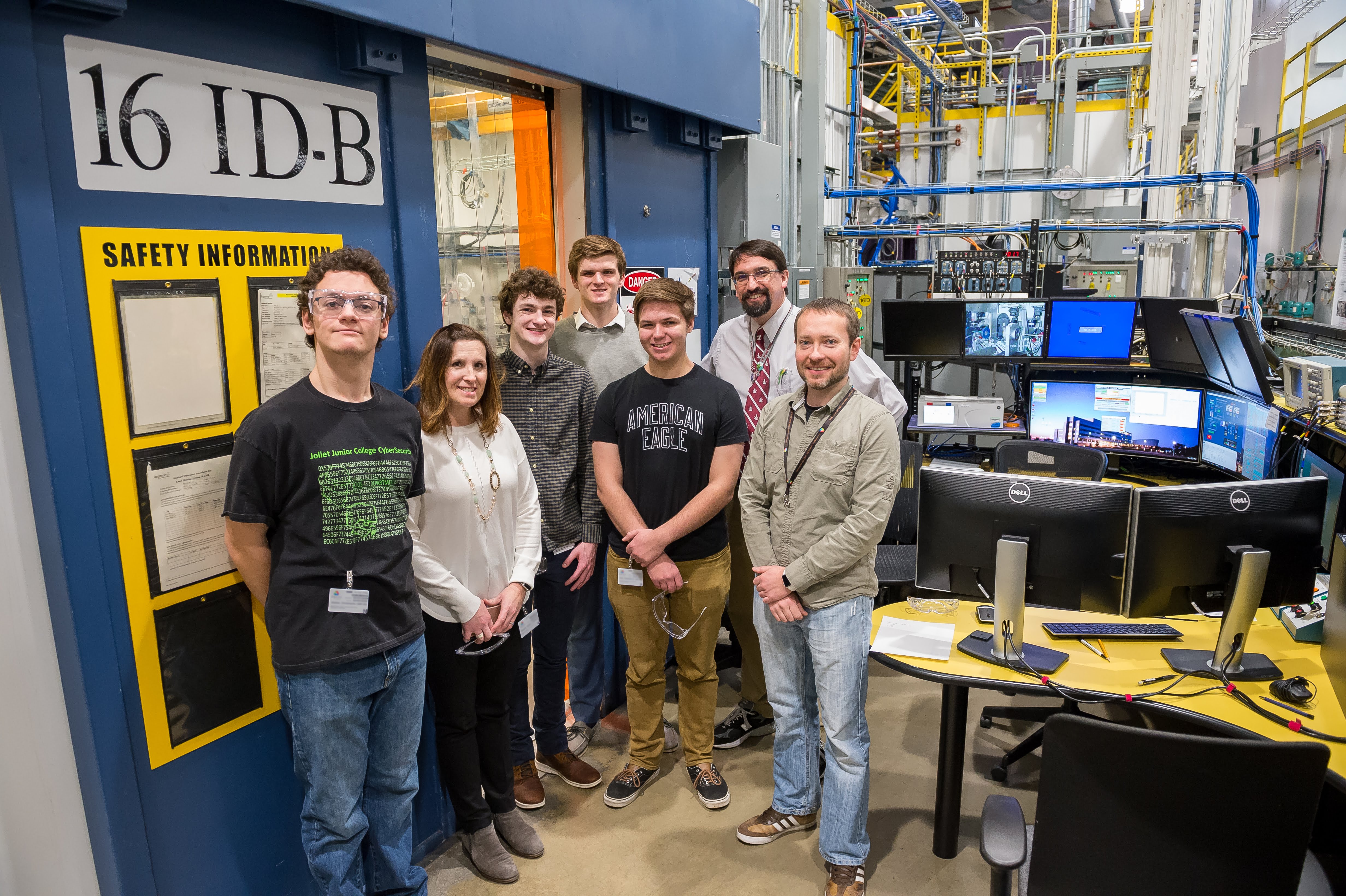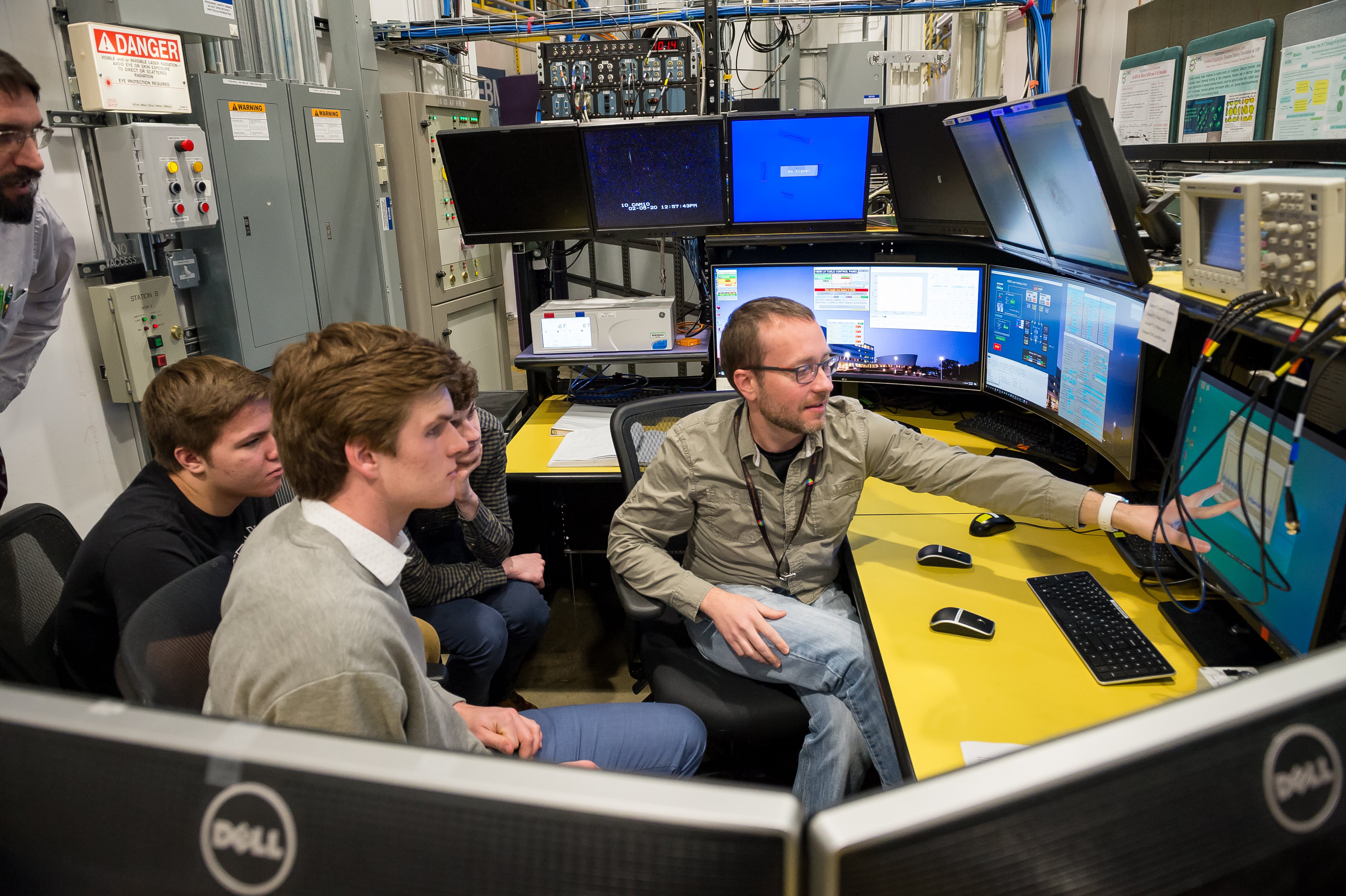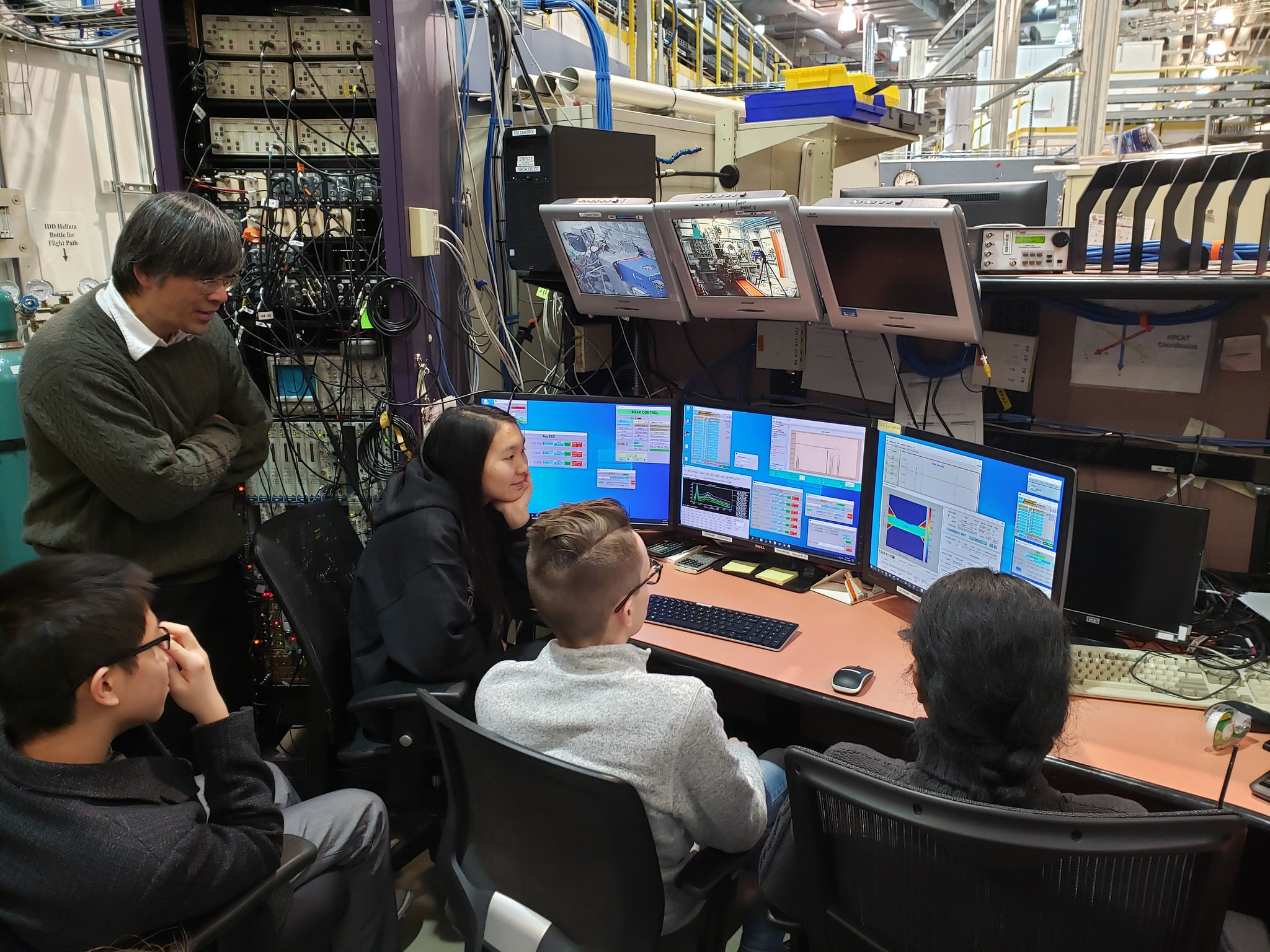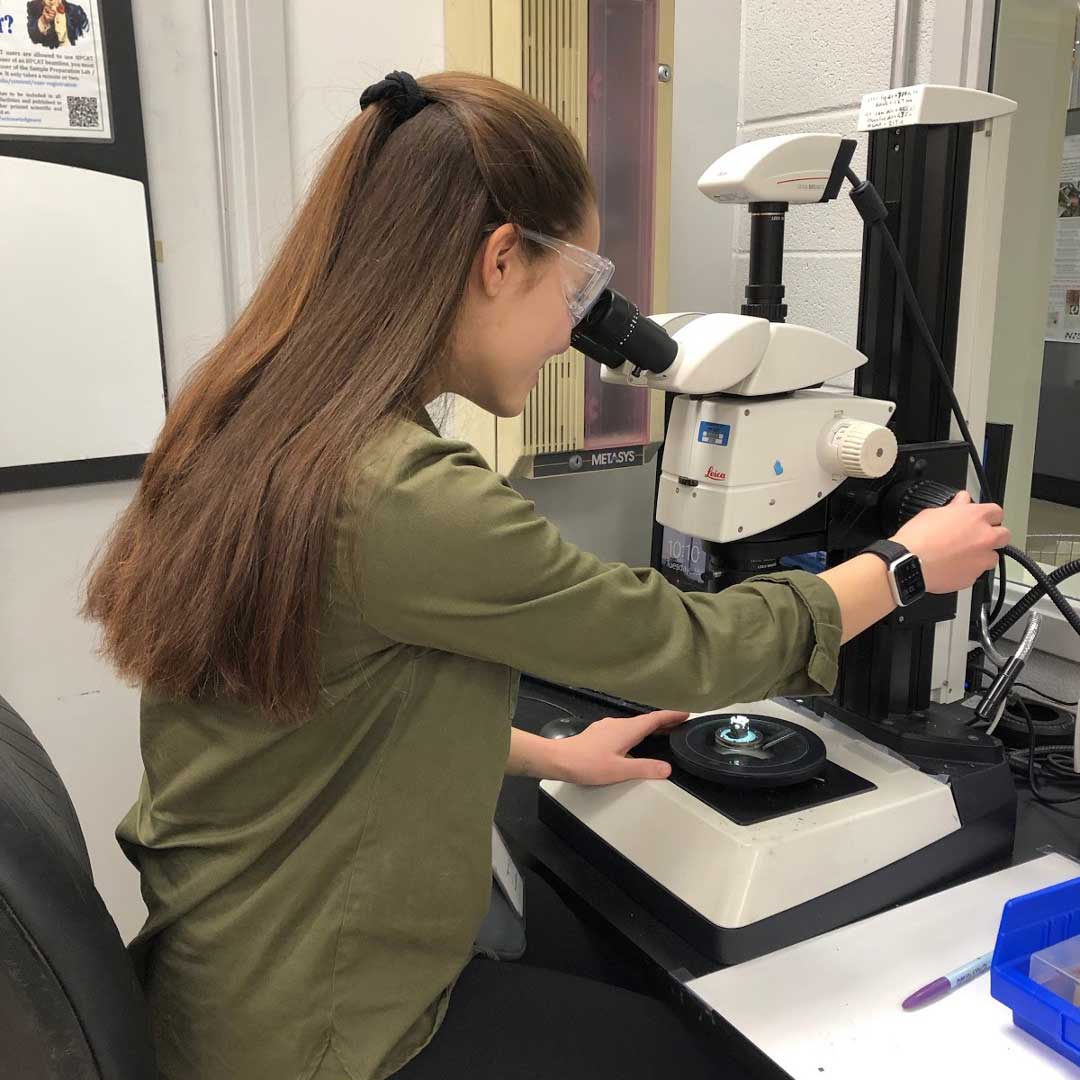HPCAT beamline scientitsts mentor ESRP students
HPCAT beamline scientists served as mentors for students from two Chicago area high schools as part of Argonne Laboratory’s annual Exemplary Student Research Program (ESRP). The ESRP provides a unique experience for local high school students to be inspired to become the next generation of researchers by conducting research of their own at Argonne’s scientific facilities. Over the 2019-2020 school year, Dr. Paul Chow and Dr. Ross Hrubiak gave the students introductions to high pressure synchrotron science, coached the development of their unique scientific projects, provided training and oversight for hands-on synchrotron x-ray experiments at 16-ID-D and 16-ID-B, and guided the subsequent data analysis and presentation.
The following school groups participated in ESRP at HPCAT:
Lockport High School
Students: Anna Blaszkiewicz, Alette Elde, Tomas Ferriter, Liam Horan, Elizabeth Nacino, Michael O’Callaghan, Cameron Viar, Christopher Vistian
Teachers: Bill Kane, Karen Murphy
HPCAT staff: Ross Hrubiak, Maddury Somayazulu
Special acknowledgement: Muhtar Ahart, (CDAC, UIC)
This group of students comprised of 6 seniors and 2 juniors with a range of interest in engineering, mathematics, medicine, biology, chemistry, and history. To start off the students’ ESRP experience, Dr. Hrubiak presented a general overview of synchrotron x-ray research and its applications to different areas of high-pressure science. They were particularly interested in the recent progress in using high-pressure for synthesis of novel high-temperature superconductors. After a literature survey, the students proposed an experiment to confirm whether a theoretically predicted chromium poly-hydride, a possible high-temperature superconductor, can be synthesized using high pressure. They learned hands-on about preparing a diamond anvil cell (DAC) and conducted the laser-heated DAC experiment at 16-ID-B.
“The most interesting part of the experiments I did during the ESRP was working with the micromanipulator, as it was very interesting to interact with materials on such a small scale. Particularly, the attractions between the materials was very exciting to see while using the computer to control the machine because attractive forces of such small scales are something you really cannot see outside a scientific environment. Overall, the whole experimentation process was very interesting, enriching, and engaging, and I really enjoyed my time working with Dr. Hrubiak and the rest of the team.” (Liam Horan, junior, future plan: aerospace engineering)
In the end, the experiment was actually very successful. Aside from confirming the predicted phases, the students’ experiment led to a discovery of yet another unexpected phase of chromium hydride. The team is planning to report the results in their first peer-reviewed publication.
“It was eye-opening to see concepts learned in the classroom play out in real life… This year, I learned in AP Biology that science is constantly changing and evolving, and our project this year exemplified that notion when our experiment yielded an unexpected result.” (Alette Eide, senior, future plan: UCLA – psychobiology major)
Overall, the ESRP experience at HPCAT turned out to been very relevant to the students’ future career plans and gave them the extra confidence they’ll need to succeed:
“Before doing ESRP, I was thinking about participating in scientific research in college but I wasn’t sure if I would like it. Doing ESRP allowed me to experience science at a much higher level and also taught me so much about the research process. After doing ESRP, I am now sure that I want to continue doing research in college, and I am so excited for it!” (Anna Blaszkievicz, senior, future plan: Northwestern – neuroscience)
“The work we did with ESRP, particular with chemistry and physics, directly pertains to my career plan because I plan on pursuing aerospace engineering, as I will need a wide basis of many scientific fields in the future….” (Liam Horan, junior, future plan: aerospace engineering)
“(The ESRP experience) has shown me other routes in science besides being a doctor and allowed my years of study to come to fruition in a true lab setting.” (Tomas Ferriter, senior, future plan: Miami Ohio – Biology and Chemistry)
Bolingbrook High School
Students: Matthew Eberle, Trisha Patnaik, Zihao Xu, Annabeth Yeung
Teacher: Lois Emde
HPCAT staff: Paul Chow, Rich Ferry and Curtis Kenny-Benson
The group from Bolingbrook High School was comprised of 2 seniors and 2 juniors with interests in engineering, science, and medicine. The students’ project began with fundamental derivations of derivatives and integrals. They were delighted to use formulas that were previously abstract to them. With Dr. Chow’s guidance, the students derived and solved their first differential equation describing plasmon excitation in metals. For the experimental portion, they assembled and aligned a low-pressure cell using cubic zirconia which they ground and polished. The students really enjoyed the sample preparation challenge. On the beamline, they measured plasmon excitations in aluminum and MgB2 and compared it with their analytical model and got good agreement. Throughout the process, Dr. Chow emphasized the step-by-step approach and quest for deeper understanding, as a physicist would approach a problem.
Read more information about the ESRP here:
https://www.anl.gov/education/exemplary-student-research-program





